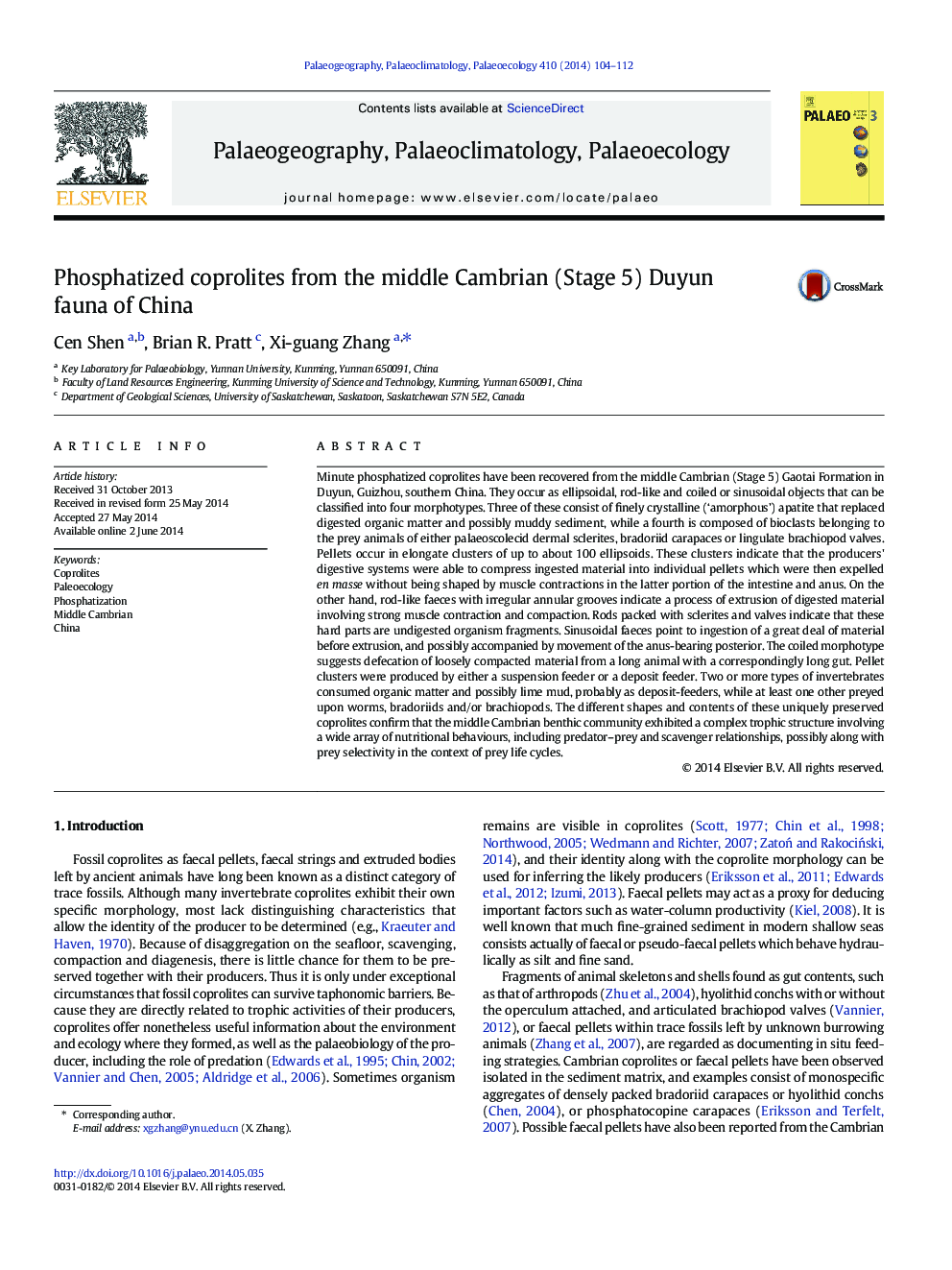| کد مقاله | کد نشریه | سال انتشار | مقاله انگلیسی | نسخه تمام متن |
|---|---|---|---|---|
| 4466111 | 1622180 | 2014 | 9 صفحه PDF | دانلود رایگان |

• Cambrian (500 Myr old) coprolites found from China display diversified morphotypes
• They provide evidence for evaluation of the predator–prey and scavenger relationships
• A complex trophic structure may have already been present in the benthic community
• The survival of these coprolites seems to involve some specialized burial conditions
Minute phosphatized coprolites have been recovered from the middle Cambrian (Stage 5) Gaotai Formation in Duyun, Guizhou, southern China. They occur as ellipsoidal, rod-like and coiled or sinusoidal objects that can be classified into four morphotypes. Three of these consist of finely crystalline (‘amorphous’) apatite that replaced digested organic matter and possibly muddy sediment, while a fourth is composed of bioclasts belonging to the prey animals of either palaeoscolecid dermal sclerites, bradoriid carapaces or lingulate brachiopod valves. Pellets occur in elongate clusters of up to about 100 ellipsoids. These clusters indicate that the producers' digestive systems were able to compress ingested material into individual pellets which were then expelled en masse without being shaped by muscle contractions in the latter portion of the intestine and anus. On the other hand, rod-like faeces with irregular annular grooves indicate a process of extrusion of digested material involving strong muscle contraction and compaction. Rods packed with sclerites and valves indicate that these hard parts are undigested organism fragments. Sinusoidal faeces point to ingestion of a great deal of material before extrusion, and possibly accompanied by movement of the anus-bearing posterior. The coiled morphotype suggests defecation of loosely compacted material from a long animal with a correspondingly long gut. Pellet clusters were produced by either a suspension feeder or a deposit feeder. Two or more types of invertebrates consumed organic matter and possibly lime mud, probably as deposit-feeders, while at least one other preyed upon worms, bradoriids and/or brachiopods. The different shapes and contents of these uniquely preserved coprolites confirm that the middle Cambrian benthic community exhibited a complex trophic structure involving a wide array of nutritional behaviours, including predator–prey and scavenger relationships, possibly along with prey selectivity in the context of prey life cycles.
Journal: Palaeogeography, Palaeoclimatology, Palaeoecology - Volume 410, 15 September 2014, Pages 104–112